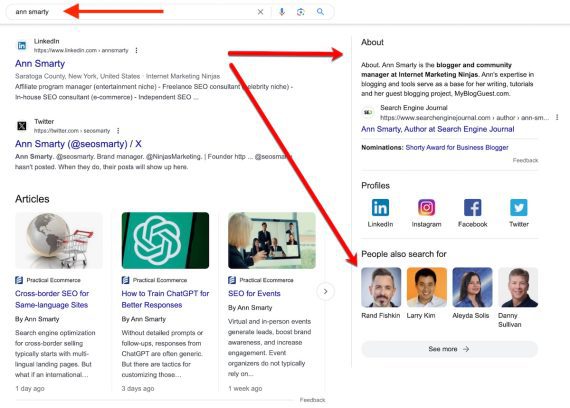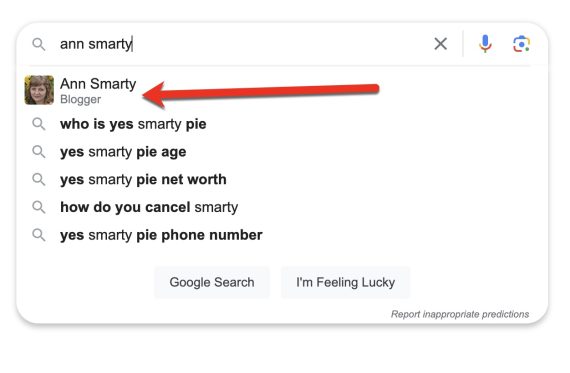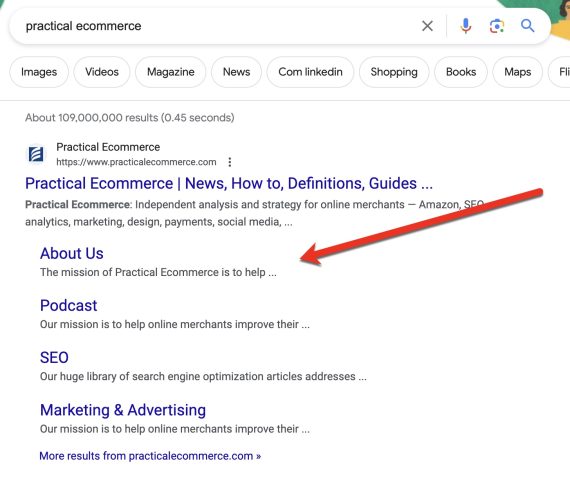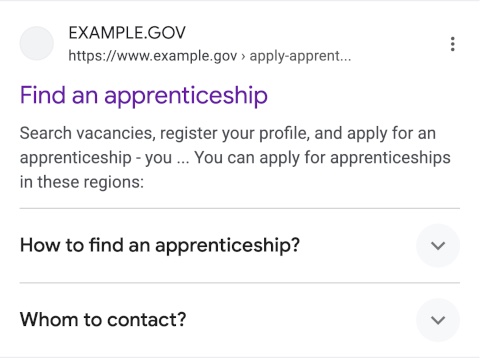Google’s algorithm uses thousands of signals to align search results with a query. One is “trustworthiness,” a combination of signals to assess a page’s credibility.
Google’s Search Central portal mentions “trust” roughly 1,600 times. It’s a long-discussed topic.
In 2011, Google’s Matt Cutts addressed “trust” as a search signal and defined it as “how much we are willing to believe that this a high-quality page.”
But there are no clear metrics to measure or understand trust, making it difficult to optimize.
The good news is Google’s search engine result pages (SERPs) provide clues. We cannot assign trust numbers or compare multiple pages. Yet knowing those clues helps explain why one page outranks another despite fewer keywords or backlinks.
Here’s how Google’s SERPs convey trusted sites and pages.
Knowledge Panels
The presence in search results of a knowledge panel for an individual or brand query is the strongest signal that Google recognizes the person or site as a “known entity.”
Knowledge panels are hard to earn. An entity — a person, organization, or location — must be part of Google’s massive knowledge graph to trigger the panel.
The knowledge graph is an interconnected map of entities to help Google understand the context behind a search query.
A brand must be connected with existing entities to become one itself. The connection is more than links, such as a trusted partner or award winner, for example. It takes many mentions in Wikipedia and reputable publishers to become a known entity.
A person or brand search that triggers a knowledge panel is a huge signal of trust from Google and a disclosure of the related entities.

Searching “ann smarty” triggers a knowledge panel, a trust signal from Google. Click image to enlarge.
Similarly, Google’s autocomplete indicates whether it considers the query an entity — with or without a knowledge panel — and the classification or category. For example, typing “ann smarty” in Google’s search box produces autocomplete results showing “Blogger” as my category.
Sitelinks
Another sign of a trusted site is the presence of sitelinks in the results of a brand query, although it’s a lesser signal than a knowledge panel.
Some sites garner one-line “mini” sitelinks.
Others generate expanded sitelinks, signaling a stronger brand.
The strongest brands also trigger a site-search box.
Rich Snippets
Rich snippets in search results stem from structured data. Rich snippets are not difficult to earn, although some search optimizers speculate Google is transitioning them into an award. For example, Google stated in its Search Central blog that FAQ snippets now show only for “well-known, authoritative government and health websites.”
This likely foretells Google’s increasingly stingy use of rich snippets. Thus keep a close eye on your site’s rich snippets and those of competitors.









